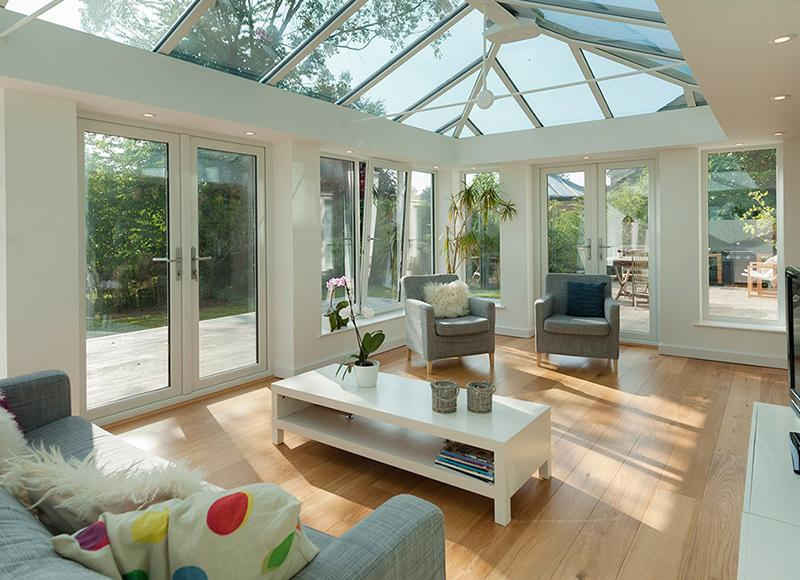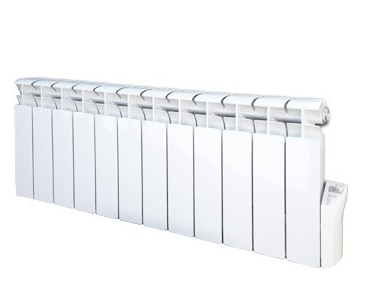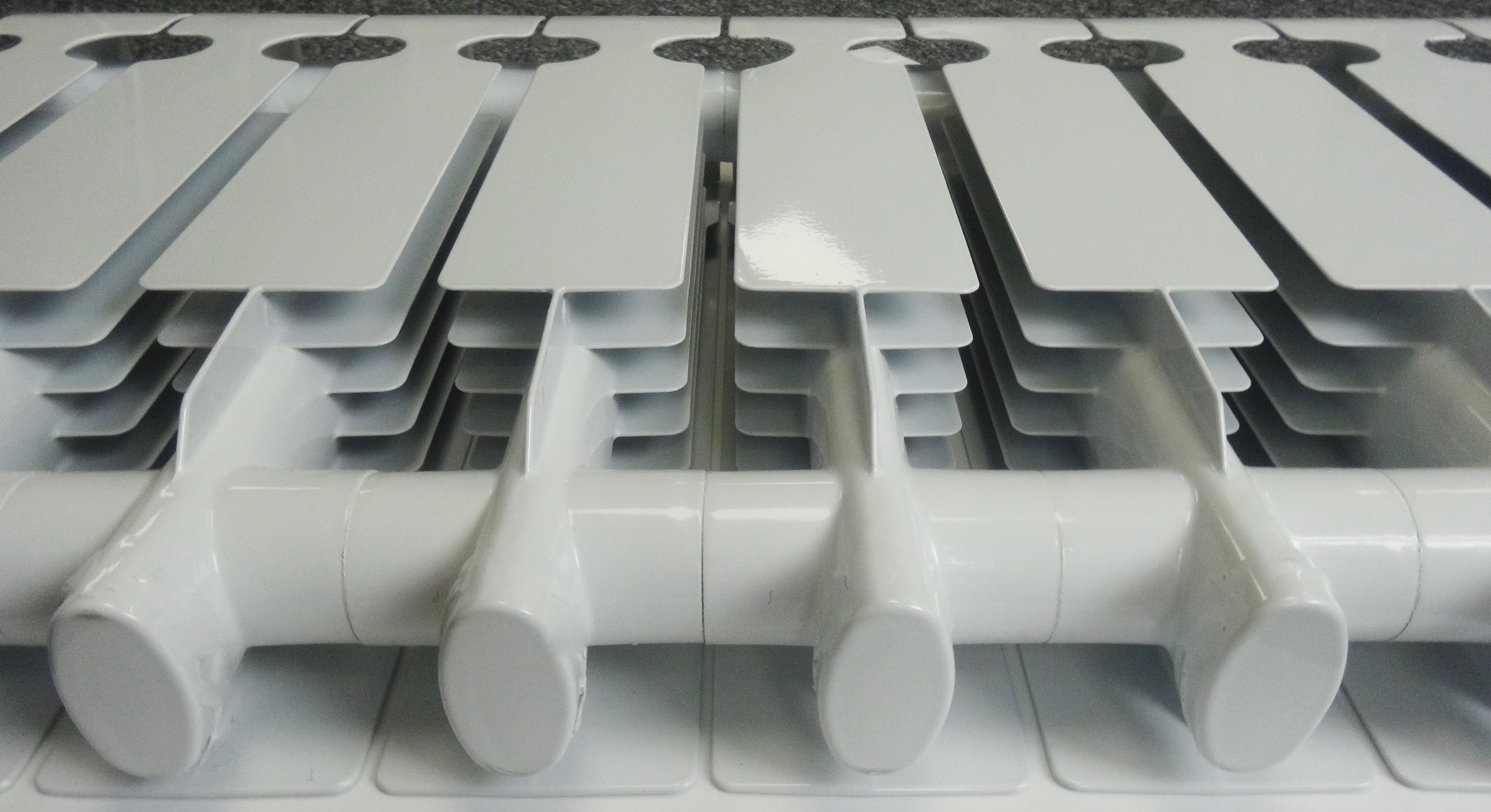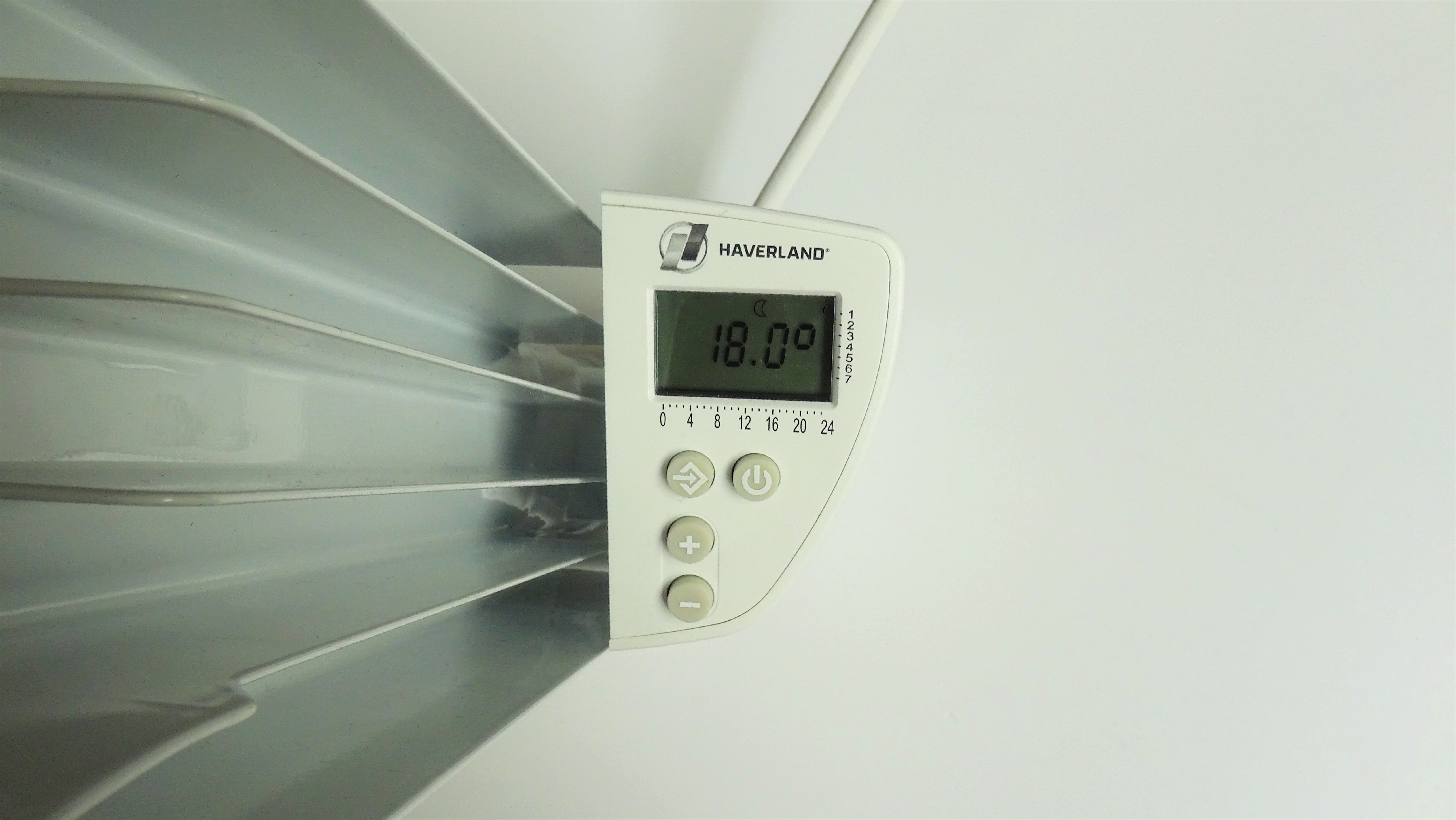 Conservatory heating is a contentious issue in the home improvement world. This is because conservatories lose heat much faster than properly insulated rooms, making them inefficient and expensive to heat. Critics call them “glorified greenhouses”, and some commentators recommend going without conservatory heating altogether – only using the conservatory when it has been naturally warmed by the sun.
Conservatory heating is a contentious issue in the home improvement world. This is because conservatories lose heat much faster than properly insulated rooms, making them inefficient and expensive to heat. Critics call them “glorified greenhouses”, and some commentators recommend going without conservatory heating altogether – only using the conservatory when it has been naturally warmed by the sun.
If that’s true, how can we in good conscience recommend to you an efficient conservatory heating solution?
Personally, I think the view that conservatories should never be heated is extreme – and more than a little out of touch with the needs of the average homeowner. Yes, conservatories are inherently inefficient and in an ideal world we would only heat well-insulated spaces that are much better at retaining heat. I would certainly never recommend pumping heat into a conservatory all winter long, whatever form of heating you use. But for those of us who can’t afford a fancy orangery or a fully insulated garden room, some form of on-demand conservatory heating at least gives us the option of using this space on those colder days.
It can be difficult to know where to start when looking for the best electric heaters for conservatories, so we decided the time was right for a review of our popular Haverland RC12B Radiator – specifically designed for conservatories. Vicky Bailey put the product through its paces, and here’s what she thought:
Haverland RC12B Conservatory Electric Heater - 1200w
A quick disclaimer before we begin – I tested the RC12B on a sunny afternoon in June, in the middle of our large, warm office. I had to set the radiator to 24 °C before the thermostat would allow it to switch on – much to the approbation of my colleagues – and the existing heat made it difficult to judge the radiator’s heat output. However, while I can’t comment on the heater’s running costs or its efficacy in a conservatory, I have given it a thorough going-over in terms of programming, style, design and size. If this review leaves you with further questions about the product, give our friendly sales team a call or take a look at the independent customer reviews on the RC12B product page.
Size & Style
 You can tell at a glance that this is a conservatory radiator: at only 38cm tall, the radiator has been designed to fit comfortably on conservatory dwarf walls. Dwarf walls are typically 52.5 cm tall, which gives you plenty of space to mount the radiator. The RC12B compensates for its diminutive stature with its width: at 102.5m wide, it will take up about half one wall in your average conservatory, fitting beneath 2-3 windows. The radiator is pretty slimline: at 8.5cm deep, it’s about the width of a pint glass. As a rough guideline, the RC12B should be able to heat conservatories with floor areas up to 11m2, but I would recommend checking with our sales team before purchasing for your conservatory. Factors such as the height of the walls, the quality of the insulation and the thickness of the glass will affect the power required to heat your conservatory.
You can tell at a glance that this is a conservatory radiator: at only 38cm tall, the radiator has been designed to fit comfortably on conservatory dwarf walls. Dwarf walls are typically 52.5 cm tall, which gives you plenty of space to mount the radiator. The RC12B compensates for its diminutive stature with its width: at 102.5m wide, it will take up about half one wall in your average conservatory, fitting beneath 2-3 windows. The radiator is pretty slimline: at 8.5cm deep, it’s about the width of a pint glass. As a rough guideline, the RC12B should be able to heat conservatories with floor areas up to 11m2, but I would recommend checking with our sales team before purchasing for your conservatory. Factors such as the height of the walls, the quality of the insulation and the thickness of the glass will affect the power required to heat your conservatory.
I was pleasantly surprised by the evident sturdiness of the radiator: the aluminium body is strong, smooth and unyielding, with a bright white painted coating that looks very contemporary – a natural match for a white conservatory. I sometimes think the photos on our website don’t do justice to the quality of our products. Of course, there’s only so much you can do to make a radiator look exciting – but if anyone has any suggestions I’m sure our marketing department would be eager to hear.
Installation & Maintenance
 One of the first things I noticed about the RC12B radiator was its weight. The radiator is filled with a thermal fluid, which makes it heavier than panel heaters or radiators that use dry thermal elements. I could carry the radiator without assistance, although I did find myself thinking it might be useful to have a second person on hand for installation. That said – all you have to do is fix the brackets to the wall and then slot the radiator into place, so the weight may not be too much of an issue. Know your strength: the radiator weights 20kg, which is about the same as a full bedside cabinet, the average luggage limit on an aeroplane, or a little less than a sack of potatoes.
One of the first things I noticed about the RC12B radiator was its weight. The radiator is filled with a thermal fluid, which makes it heavier than panel heaters or radiators that use dry thermal elements. I could carry the radiator without assistance, although I did find myself thinking it might be useful to have a second person on hand for installation. That said – all you have to do is fix the brackets to the wall and then slot the radiator into place, so the weight may not be too much of an issue. Know your strength: the radiator weights 20kg, which is about the same as a full bedside cabinet, the average luggage limit on an aeroplane, or a little less than a sack of potatoes.
You will need a professional electrician to install your radiator if you want to make use of the pilot wire to connect the RC12B to a central controller. For more details on this, speak to our sales team or consult your electrician.
As far as maintenance goes, all the radiator needs is to be kept clean – it doesn’t need an annual service like a gas boiler because it does not burn fuel. The manual recommends dusting with a dry, soft cloth when the radiator is disconnected and cold. Fun fact: the manual also says that the “B” in the radiator’s name actually stands for “Benjamin” – isn’t that a whole lot cuddlier than “RC12B”?
Heat Output
Having only seen Benji the RC12B in pictures before, I was geekily excited to take a look at the radiator in the “flesh”. It’s all very well saying a radiator is “efficient” – but often it’s not until you’ve had a chance to peek inside that you can see what the manufacturer has done to make it so.

The radiator warmed up quickly, but never seemed to become unbearably hot on the surface. Perhaps that was because the room was already rather warm – the RC12B uses a precision digital thermostat that switches the radiator off as soon as the room reaches temperature, to avoid wasting energy – but the radiator never seemed to exceed the comforting warmth I associate with central heating radiators. The radiator stayed warm for a long time after I switched it off, which suggests the heating fluid used has good thermal retention properties – another green flag for efficiency.
Programming & Using the Radiator

Using the radiator was pleasantly straightforward. The function button is your friend – you can use it to quickly switch between modes, demonstrated by icons on the control panel, and within each mode you can select the temperature using the “+” and “-” buttons. If you just wanted to use the radiator for on-demand heating, you could do so easily by leaving it in comfort mode and switching it on and off as you enter and leave the room. So far, so intuitive.
Programming the radiator was a little trickier, but quick to do once I’d got the hang of it. In retrospect, the design of the programmer is really quite simple; it’s just not helped by some confusing passages in the manual. Nothing too serious, but they made me falter several times before understanding what I was supposed to do:
● The manual is not particularly well translated from the Spanish. This is evident from the first words of the “Programmation” guide.
● The difference between the modes was not clear at first. The “Chrono” mode is the one you want for programming, and it’s signified by a small icon in the shape of a clock
● Setting the day of the week was made more confusing by the fact that the flashing dash does not precisely line up with the days of the week. However, it’s easy enough to count through the dashes to work out which relates to which day.
Once I’d sussed these few quirks, I whizzed through the programming, assigning either comfort or economy mode to each hour. Unlike other radiator programmers, there’s no option to set to anti-freeze. Presumably this is because you can just turn the radiator off when you’re not in the conservatory – recommended in any case to avoid wasting energy.
The Haverland RC12B Electric Radiator is ideal for conservatories with dwarf walls. It’s a very well made radiator with an attractive and discreet design which is well-adapted for efficient comfort heating. However, if your conservatory has full length glass walls you might want to consider a freestanding radiator instead.
If you're looking for a stylish and effective conservatory heating solution, browse our range of convervatory electric radiators or have a chat with our friendly sales team on 0330 300 4444.





